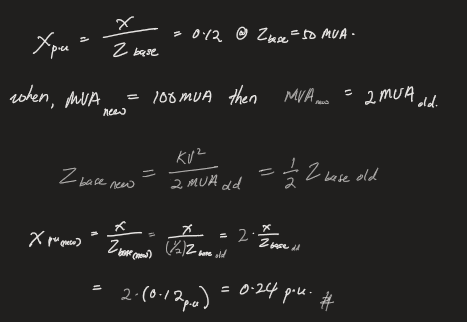Dear Buddies, The transformer impedance voltage is given in percentage of the total impedance. This is obtained by short circuiting the secondary and inject at the primary to get a full load current on the secondary. This is also often considered the short circuit impedance.
Q1. Which impedance shall I use for calculation during power system analysis in a stable load condition. Some people use the short circuit impedance but I am not sure if this is right?
Q1. Which impedance shall I use for calculation during power system analysis in a stable load condition. Some people use the short circuit impedance but I am not sure if this is right?



